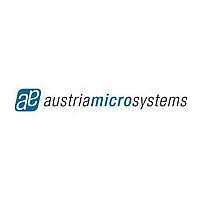AS3932-BQFT austriamicrosystems, AS3932-BQFT Datasheet - Page 20

AS3932-BQFT
Manufacturer Part Number
AS3932-BQFT
Description
IC RF PROGRAM 16-QFN
Manufacturer
austriamicrosystems
Datasheet
1.AS3932-BQFT.pdf
(36 pages)
Specifications of AS3932-BQFT
Rf Type
Read / Write
Frequency
110kHz ~ 150kHz
Features
RSSI Equipped
Package / Case
16-VFQFN Exposed Pad
Lead Free Status / RoHS Status
Lead free / RoHS Compliant
Other names
AS3932-BQFTTR
AS3932
Datasheet - D e t a i l e d D e s c r i p t i o n
8.3 Channel Amplifier and Frequency Detector
Each of the 3 channels consists of a variable gain amplifier, an automatic gain control and a frequency detector. The latter detects the presence
of a carrier. As soon as the carrier is detected the AGC is enabled, the gain of the VGA is reduced and set to the right value and the RSSI can be
displayed.
It is possible to enable/disable individual channels, in case not all three channels are needed. This enables to reduce the current consumption by
1.5 µA (typ.) per channel.
8.3.1 Frequency Detector / AGC
The frequency detection uses the RTC as time base. In case the internal RC oscillator is used as RTC, it must be calibrated, but the calibration
is guaranteed for a 32.768 kHz crystal oscillator only. The frequency detection criteria can be tighter or more relaxed according to the setup
described in
Table 14. Tolerance Settings for Wakeup
The AGC can operate in two modes:
As soon as the AGC starts to operate, the gain in the VGA is set to maximum. If the AGC down only mode is selected, the AGC can only
decrease the gain. Since the RSSI is directly derived from the VGA gain, the system holds the RSSI peak.
When the AGC up and down mode is selected, the RSSI can follow the input signal strength variation in both directions.
Regardless which AGC operation mode is used, the AGC needs maximum 35 carrier periods to settle.
The RSSI is available for all 3 channels at the same time and it is stored in 3 registers (R10<4:0>, R11<4:0>, R12<4:0>)
Both AGC modes (only down or down and up) can also operate with time limitation. This option allows AGC operation only in time slot of 256µs
following the internal wake-up. Then the AGC (RSSI) is frozen till the wake-up or RSSI reset occurs.
The RSSI is reset either with the direct command 'clear_wakeup' or 'reset_RSSI'. The 'reset_RSSI' command resets only the AGC setting but
does not terminate wake-up condition. This means that if the signal is still present the new AGC setting (RSSI) will appear not later than 300µs
(35 LF carrier periods) after the command was received. The AGC setting is reset if for duration of 3 Manchester half symbols no carrier is
detected. If the wake-up IRQ is cleared the chip will go back to listening mode.
In case the maximum amplification at the beginning is a drawback (e.g. in noisy environment) it is possible to set a smaller starting gain on the
amplifier, according to the
Table 15. Bit Setting of Gain Reduction
www.austriamicrosystems.com/LF-Receiver/AS3932
R4<3>
AGC down only (R1<5>=0)
AGC up and down (R1<5>=1)
0
0
0
0
0
1
1
1
1
R2<1:0>(see Table
R2<1>
R4<2>
0
0
1
1
0
0
0
1
1
0
0
1
1
Table
R4<1>
15. In this way it is possible to reduce the false frequency detection.
14).
0
0
1
0
1
0
1
0
1
R4<0>
0 or 1
0 or 1
0 or 1
0 or 1
0 or 1
0 or 1
0 or 1
0
1
R2<0>
0
1
0
1
Revision 1.4
no gain reduction
Gain reduction
-12dB
-16dB
-20dB
-24dB
-4dB
-8dB
n.a.
n.a.
tighter (medium)
Tolerance
reserved
stringent
relaxed
20 - 36











